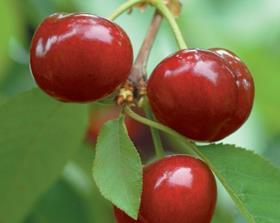
Asian markets may take on increasing importance for the Chilean cherry deal in the coming season if good growing conditions continue to line up, but exporters will need to pay close attention to product quality or risk results from the market that are hard to swallow.
Chile sent around 42 per cent of its cherry volume to Asia last season, the vast majority going to Taiwan and China. The country’s production volume has been held back for the last few seasons due to combination of climatic factors.
If this coming season in November-December is free of those problems – as it so far appears to be – the result of increasing yields and plantings could deliver a potential crop of 10-11m cartons.
“The next cherry season is going to be a bit tough,” said Nicolás Damm, exporter David Del Curto’s commercial manager for Asia.
“Chile has the potential to do 10-11m cartons of cherries, which will be quite an increase from this past season. The growers are obviously happy from this last season’s results – it was spectacular – but it will be hard next season if there’s an increase of 20-25 per cent in volume to have a similar result.
Mr Damm told Fruitnet.com that if it came to that, exporters would have to be even stricter on what they send to Asia. With exporters potentially using Asian markets as a pressure-release valve on a large crop, China in particular, buyers will be very strict on quality.
“They’ll want very large, uniform fruit with high pressure in good packaging. I expect maybe 3m cartons could go to Asia next year, but we’ll have to be more strict on quality,” he explained. “In China, good quality fruit will get good prices, but anything less than that can be really punished by the market.”
Maintaining quality is also key beyond the next season in China, according to San Francisco Lo Garces, Chile’s second-largest cherry exporter. Chinese customers are loyal to labels that are perceived to be high quality, the company’s Cristian Tagle told Fruitnet.com, but quickly drop them if quality falls.
“The market always wants high quality and consistency,” he said. “They trust the good labels as long as the quality is always there; once you fail, they loose that confidence very soon. This is not a volume driven market, it’s all about quality.”
Longer term, Chile’s cherry industry is looking to extend its harvest period and availability in export markets. The current season is concentrated over about three weeks, putting limitations on the volume the industry can sell.
“`We need` to extend the period where the product is available. There is no more room to grow on certain weeks where the offer exceeds demand, and packing capacity becomes a bottle neck,” said Mr Tagle, adding that heavy concentration of arrivals right before the Chinese New Year is also very risky.
Korea and Japan are the next markets on the cherry radar for Chile. Both markets, Korea in particular, have proven lucrative if discerning markets for suppliers like Tasmania, New Zealand and the US. The potential for Chile if it can gain access to the two markets for seafreighted cherries is promising.






No comments yet